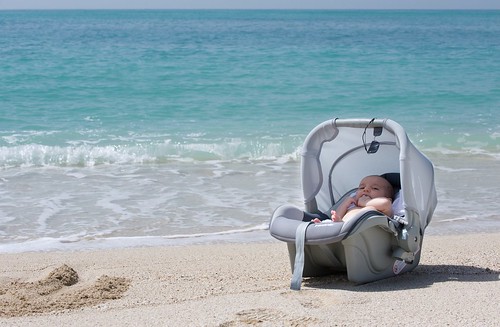Mixture of 5-Aminolevulinic Acid and Iron Increases Hair Growth in Mice
5-aminolevulinic acid (5-ALA) is a substance found in most organisms. It is used for plant growth as well as photodynamic therapy, since it increases sensitivity to light irradiation.
According to some studies, it might also help with hair growth. In a study reported in this month's issue of Journal of Dermatology, Morokuma et al. report:
Methods: The effect of a 5-ALA and iron ion admixture on hair growth and cell proliferation in mice was examined. The dorsal hair of 8-week-old male CeH/HeN mice was clipped, and a 5-ALA and iron ion admixture was applied to the dorsal skin once daily for 21 days in a room supplied with common room lights. Hair growth was later examined by calculating the ratio of the area showing hair growth to the total clipped area. For the cell proliferation assay, a 5-ALA and iron ion admixture at several different concentrations was added to a culture medium containing keratinocytes or fibroblasts, and the cell numbers were counted.
Results: Mice treated with an admixture of 5-ALA and iron ion showed significant hair growth, as revealed by the Tukey–Kramer test. The stimulatory effect of the mixture was almost identical to that of 5% minoxidil. No proliferation of keratinocytes or fibroblasts was observed, however, when an admixture of 5-ALA and iron ion was added to the medium.
Conclusions: The results suggest that an admixture of 5-ALA and iron ion stimulates murine hair growth in vivo independent of epithelial and mesenchymal cells, although the precise mechanism is still uncertain. This mixture has the potential to become a beneficial new treatment for alopecia.
Granted, this study was done on mice, but significant hair growth after only two weeks is still a promising result. Unlike other hair growth remedies like Asiasari radix (read about it here) and green tea (read about it here), 5-ALA does not seem to increase skin cell proliferation, which means it must work through some other mechanism.
Also, this study used a mixture of 5-ALA and iron ions, so some of the effect might be due to the iron ions. Unfortunately, I don't have access to the full study yet, so I can't say what kind of a mixture they used. Iron ions by themselves apparently did nothing, however.
There is also a rather vague abstract available of an article that appeared in Fragrance Journal in 2005. Author Tanaka reports:
It has been known that high-concentration dose of ALA easily metabolize into and are stored as protoporphyrin IX (PPIX), increasing sensitivity of light irradiation (use of photosensitizer for PDT). On the other hand, ALA with minerals such as iron increases activity of animals. We found remarkable hair growth stimulation effects in combination ALA and iron (Fe-ALA). We assume that Cytochrome induced from ALA and iron in mitochondria activates hair growth. We hope Fe-ALA will be new and effective hair growth promoter.
Cytochromes are a type of hemoprotein that carry out electron transport. The author suggests that 5-ALA and iron together increase cytochrome activity, which results in hair growth. I'm guessing the study was done on mice or rats, though the abstract doesn't mention anything about this. Judging by the mention of mitochondria and high-concentration doses, I assume they used 5-ALA orally instead of topically, unlike in the first study I mentioned.
Apparently the absorption of 5-aminolevulinic acid through the skin is quite low. There are, however, ways of improving the absorption. Tokuoka et al. suggest using l-menthol:
Enhancing effect of l-menthol and its derivatives, l-menthyl formate, l-menthyl acetate, and l-menthyl propionate, on skin permeation of 5-aminolevulinic acid (ALA) through Yucatan micropig full-thickness skin was investigated using a Franz-type diffusion cell. ALA solutions were prepared using ethanol-water mixed solvents with l-menthol or the derivative. Skin permeation coefficients (Kp) of ALA with more than 3.0 wt% of l-menthol was significantly larger than that without l-menthol. In addition, Kp of ALA with the derivative increased as follows: l-menthol ≍ l-menthyl propionate <>. These results suggest that l-menthol and the derivative are effective to enhance ALA skin permeation.
Adding l-menthol or one of its derivatives thus increased the absorption. The most effective form was l-menthyl acetate (which you can online, by the way). Another way of improving the skin delivery is reported by Pierre et al.:
PURPOSE: To optimize 5-ALA-PDT via improving the highly hydrophilic 5-ALA limited penetration into the skin, we propose the use of the known skin penetration enhancer, oleic acid (OA).
RESULTS: The flux and in vitro retention of 5-ALA in viable epidermis increased in the presence of 10.0% (w/w) OA. The amounts of PpIX, evaluated both by chemical tissue extractions and in vivo measurements by an optical fiber probe, increased after applying 5-ALA formulations containing 5.0 or 10.0% OA. Moreover, in vivo kinetic studies showed an increase in skin PpIX accumulation when formulations containing 10% OA were used; PpIX accumulation was also maintained longer compared to controls.
CONCLUSIONS: Both in vitro and in vivo results show the OA potential as an optimizer of 5-ALA skin delivery.
Oleic acid, which is what this study used, is a monounsaturated fatty acid found mainly in olive oil and grape seed oil. The results suggest either one might be effective as a carrier oil for the 5-ALA.
As far as I know, there are no hair growth products on the market that contain 5-ALA as one of the ingredients. However 5-ALA, though on the expensive side, is available for purchase from several manufacturers.
For more information on hair growth, see these posts:
Asiasari Radix Extract Grows Hair in Mice and in Human Skin Cells
Vitamin E Tocotrienols May Grow Hair in Humans
3 Quick Ways to Find Out Whether Your Hair Growth Product is Working
Green Tea Extract Grows Hair in Vitro, May Work in Vivo









0 kommenttia:
Post a Comment